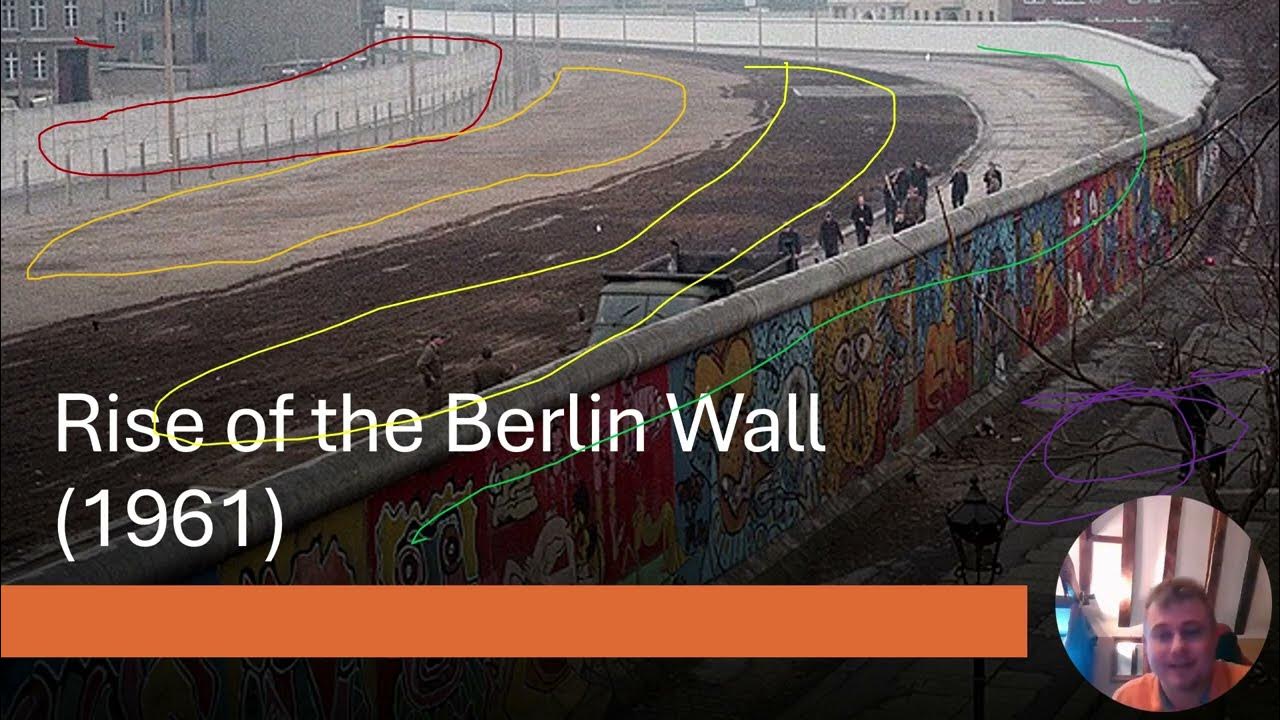How a Nuclear World War 3 Almost Happened
Summary
TLDRThe Cuban Missile Crisis of 1962 brought the world to the brink of nuclear war as the Soviet Union secretly deployed nuclear missiles in Cuba, just 80 miles from the US. President Kennedy's discovery led to a tense standoff, prompting a naval quarantine to prevent further Soviet shipments. The crisis escalated with military preparations on both sides, but crucial diplomatic maneuvers ultimately avoided conflict. The resolution came when Khrushchev agreed to withdraw missiles from Cuba in exchange for the US removing its missiles from Turkey, showcasing the importance of negotiation in high-stakes international relations.
Takeaways
- 😀 The Renaissance marked a significant cultural rebirth in Europe, emphasizing humanism and the rediscovery of classical knowledge.
- 🎨 Art during the Renaissance flourished with renowned artists like Leonardo da Vinci and Michelangelo, who focused on realism and human emotion.
- 📜 The period saw the emergence of new ideas in science and philosophy, challenging traditional beliefs and promoting inquiry.
- 🌍 The invention of the printing press by Johannes Gutenberg revolutionized the spread of knowledge and ideas across Europe.
- 🕊️ The Renaissance fostered a spirit of individualism, leading to the recognition of personal achievements and contributions in various fields.
- 🔭 Scientific advancements were significant during the Renaissance, with figures like Copernicus proposing heliocentric theories that changed astronomy.
- 📖 Literature thrived, with writers such as Shakespeare exploring themes of humanity, love, and conflict in their works.
- 🏛️ Architecture evolved with a return to classical styles, leading to the construction of iconic structures like St. Peter's Basilica.
- ⚔️ Political thought transformed, with thinkers like Machiavelli advocating for pragmatic approaches to governance.
- 💡 The Renaissance laid the groundwork for the modern era by promoting values of education, critical thinking, and cultural exchange.
Q & A
What was the primary reason for the Cuban Missile Crisis in 1962?
-The Cuban Missile Crisis was primarily caused by the Soviet Union's decision to station nuclear missiles in Cuba, which posed a direct threat to the United States, especially given Cuba's proximity to the U.S. mainland.
How did the United States become aware of the Soviet missiles in Cuba?
-American intelligence confirmed the presence of Soviet missiles in Cuba through reports from spies and a U-2 reconnaissance flight that took thousands of photographs of suspected military sites.
What were Nikita Kruschev's goals in placing missiles in Cuba?
-Kruschev aimed to leverage the presence of the missiles to gain concessions from the U.S., such as the removal of American missiles from Turkey and potentially the evacuation of NATO forces from West Berlin.
What military options were proposed by Kennedy's advisors during the crisis?
-Kennedy's advisors proposed several military options, including an airstrike to bomb the missile sites, a possible invasion of Cuba, or implementing a naval blockade, which Kennedy ultimately chose to frame as a 'quarantine.'
What was the significance of the U-2 spy plane incident?
-The downing of a U-2 spy plane over Cuba heightened tensions, as it was seen as a provocative act that could have led to an immediate military response from the U.S.
How did the Soviet submarine B-59 play a role in escalating tensions?
-The Soviet submarine B-59, which was equipped with a nuclear torpedo, nearly launched a nuclear strike due to fears of being attacked. However, the decision was averted when Commander Vasily Arkhipov refused to authorize the launch.
What was the outcome of the negotiations between Kennedy and Kruschev?
-The negotiations resulted in Kruschev agreeing to withdraw Soviet missiles from Cuba in exchange for the U.S. removing its missiles from Turkey, thus averting nuclear war.
What measures did the U.S. take to prepare for potential conflict during the crisis?
-The U.S. military began preparing for conflict by positioning naval forces around Cuba, conducting submarine operations to track Soviet submarines, and maintaining a state of high alert.
How did the crisis affect U.S.-Soviet relations moving forward?
-The Cuban Missile Crisis highlighted the dangers of nuclear brinkmanship and led to the establishment of a direct communication hotline between Washington and Moscow to prevent future misunderstandings and conflicts.
What was the broader impact of the Cuban Missile Crisis on global politics?
-The Cuban Missile Crisis demonstrated the precarious nature of Cold War tensions and the potential for nuclear conflict, leading to increased efforts for arms control and diplomacy in international relations.
Outlines

Dieser Bereich ist nur für Premium-Benutzer verfügbar. Bitte führen Sie ein Upgrade durch, um auf diesen Abschnitt zuzugreifen.
Upgrade durchführenMindmap

Dieser Bereich ist nur für Premium-Benutzer verfügbar. Bitte führen Sie ein Upgrade durch, um auf diesen Abschnitt zuzugreifen.
Upgrade durchführenKeywords

Dieser Bereich ist nur für Premium-Benutzer verfügbar. Bitte führen Sie ein Upgrade durch, um auf diesen Abschnitt zuzugreifen.
Upgrade durchführenHighlights

Dieser Bereich ist nur für Premium-Benutzer verfügbar. Bitte führen Sie ein Upgrade durch, um auf diesen Abschnitt zuzugreifen.
Upgrade durchführenTranscripts

Dieser Bereich ist nur für Premium-Benutzer verfügbar. Bitte führen Sie ein Upgrade durch, um auf diesen Abschnitt zuzugreifen.
Upgrade durchführenWeitere ähnliche Videos ansehen
5.0 / 5 (0 votes)






